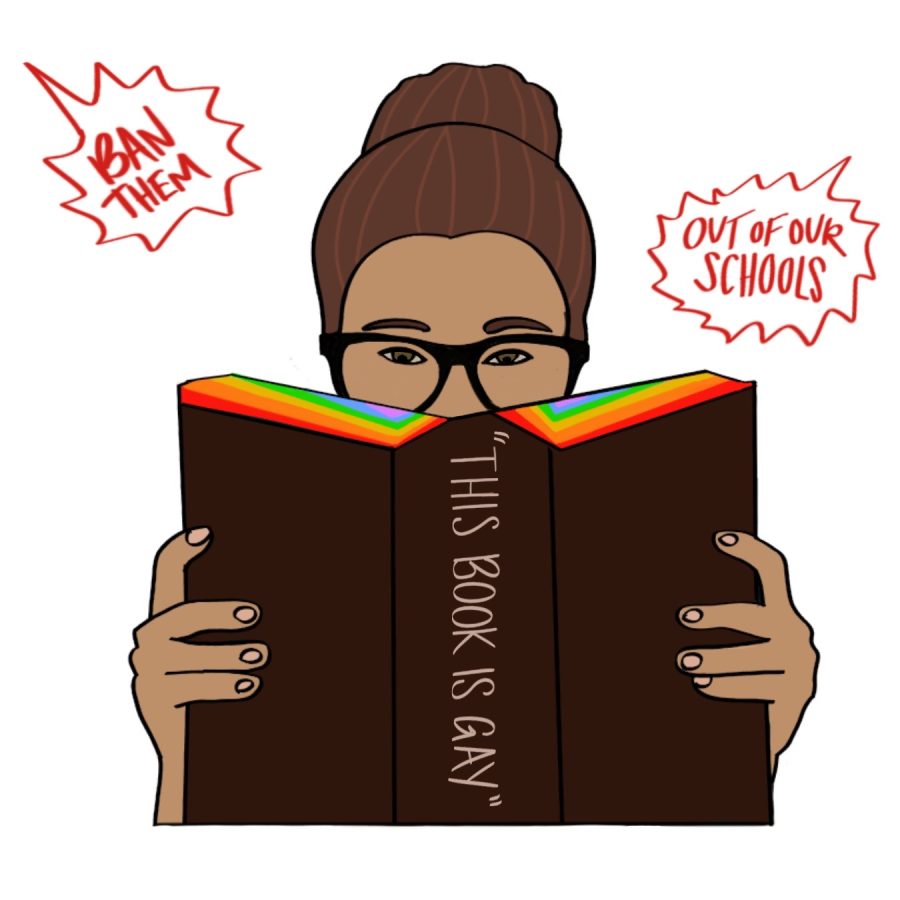Inclusivity Is Necessary In Class Libraries
February 16, 2023
It’s ironic that a school that includes Fahrenheit 451 in its curriculum censors classroom libraries. Specifically, by targeting LGBTQ-centered books.
Last semester, a queer library on campus was brought under fire by national news sites that claimed the library contained explicit material. These sensationalized articles sparked outrage, and some parents were vocal with anger.
“Sexuality, regardless of gender identity, doesn’t belong in an educational environment,” said Megan Martinez at a CUSD Board Meeting. “[They] opened the door to pseudo pornography.”
Weeks later, along with several schools across California, SJHHS received a bomb threat. Ours was unique, targeted specifically at the recent controversy and an LGBTQ teacher on campus.
“Teachers are here to teach math, science, history, and writing, NOT to talk about sexuality,” the threat said.
It’s clear that many incorrectly assume that sexuality, even straight, is not taught in classrooms. The perpetuation of this false notion allows people to interpret supplementary queer reading material as inherently abnormal.
Throughout high school, as early as freshman year, students tackle sexuality in the required curriculum through Romeo and Juliet. The senior year AP Literature curriculum includes graphic, sexuality-driven novels like Beloved and The Awakening. The following is an excerpt from a passage from The Storm, a required piece of reading in the class.
“When he touched her breasts they gave themselves up in quivering ecstasy, inviting his lips. Her mouth was a fountain of delight. And when he possessed her, they seemed to swoon together at the very borderland of life’s mystery.”
That writing is no more graphic or pornographic in nature than many of the queer books that were removed from libraries; the only difference is the gender of the couples. The truth is queer books aren’t dirty, they are just queer. Our education officials must ask themselves what message they are sending to students when these heterosexual stories are viewed as necessary classics to learn and study while removing books depicting queer relationships. What they fail to realize is that by legitimizing this rhetoric, through these removals, there are real, dangerous effects on student lives.
According to The Trevor Project, a nonprofit focusing on suicide prevention amongst LGBTQ youth, 45% of LGBTQ youth reported that they have seriously considered committing suicide in the past year. However, their 2022 National Survey on LGBTQ Youth Mental Health found that suicide rates in LGBTQ youth decrease when they perceive their school to be LGBTQ-affirming.
Removing books that educate and help students who are deeply struggling with their identity only signals to them that they are not welcome on campus. Our curriculum has legitimized heterosexuality, and the hypocritical condemnation of queer reading material is not only reprehensible but downright dangerous.

